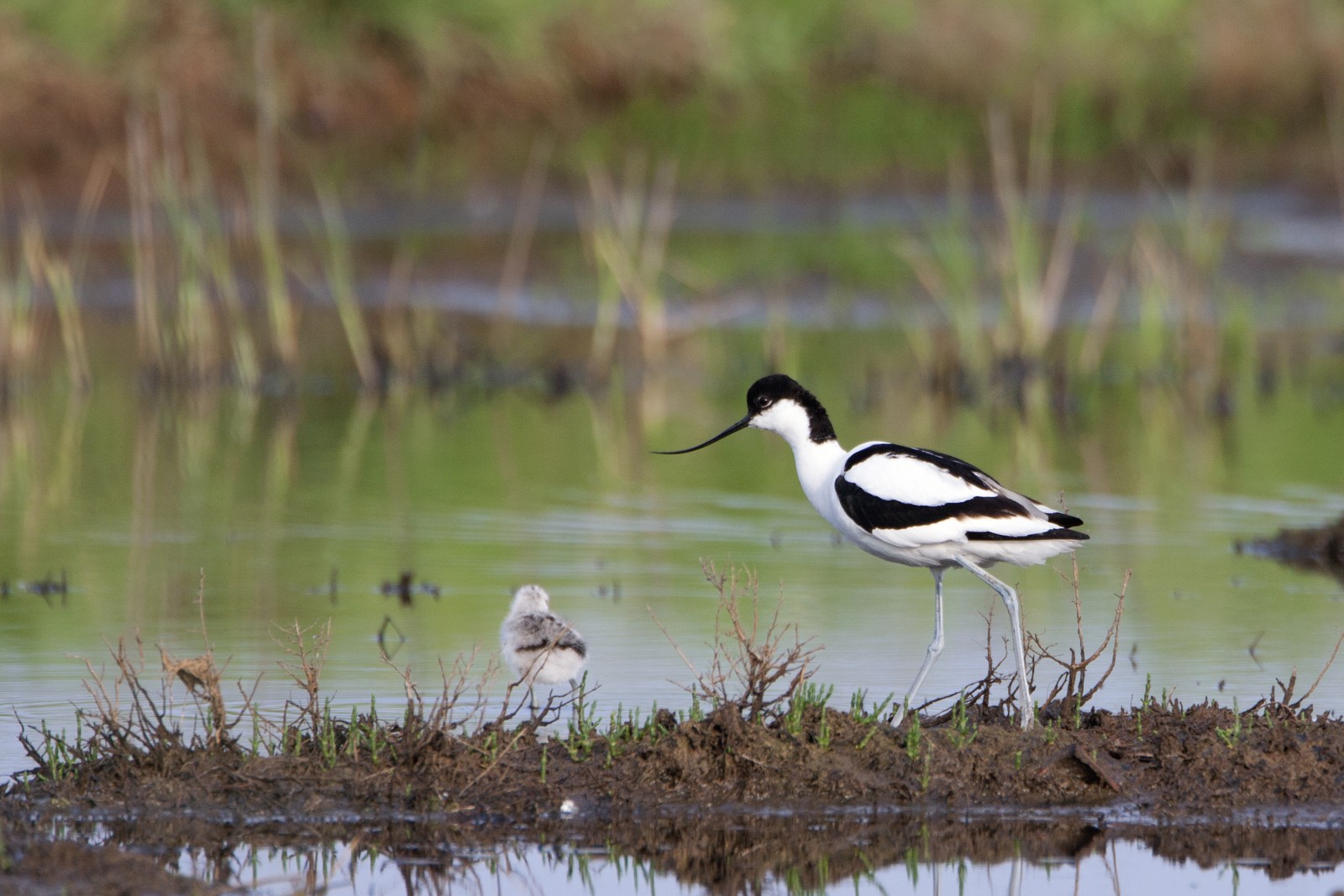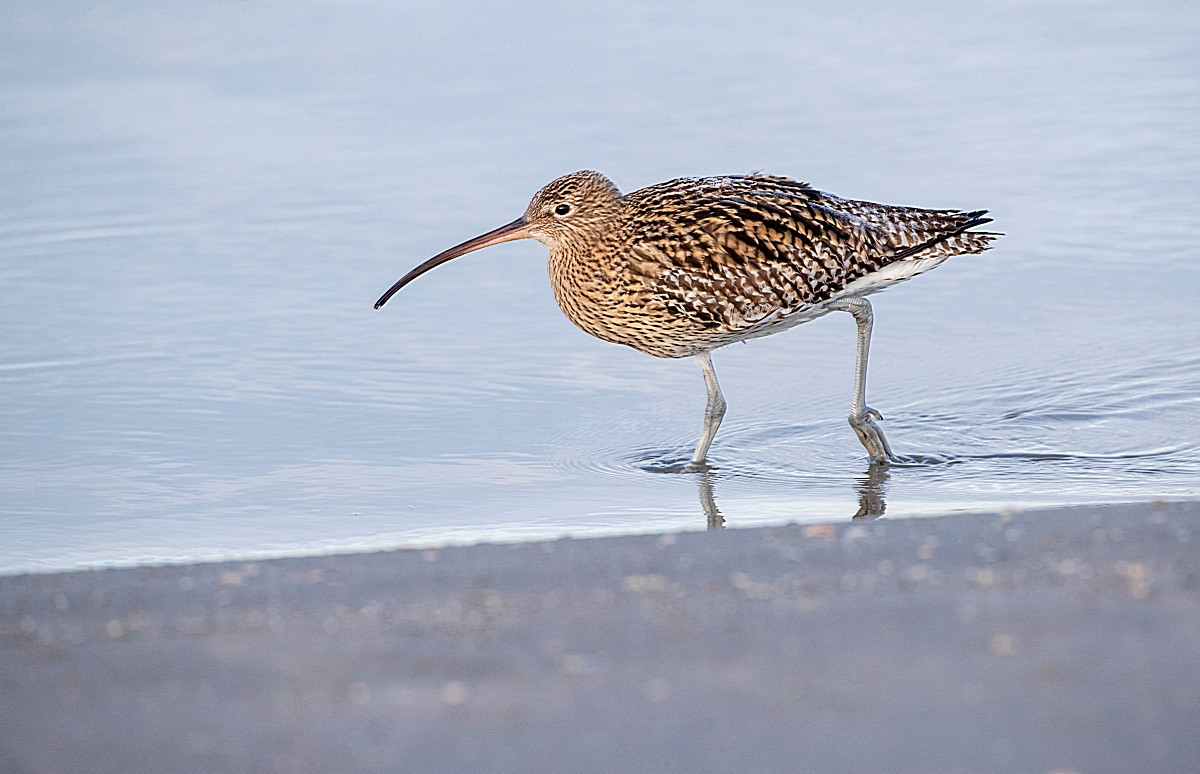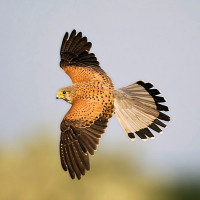Description
This route is greatly appreciated by nature photographers, who use their cars as moveable hides because this allows them to get very close to foraging waders – especially at the Darscho (also known as the Warmsee) and, at higher water levels, at the Neubruchlacke (also known as the Obere Halbjochlacke). The ушест був and Обична (Црнонокна) ветрушка breeding in the nesting aids at the Apetlon swimming lake are further highlights of this route, which ends at the little-visited (but no less interesting!) Fuchslochlacke.
Details
Access
Heading from Apetlon towards Frauenkirchen, take a gravel road leading slightly to the left after approx. 1.3 km. This road leads straight to the southern shore of the Darscho and then continues north along the eastern shore. The lake is not part of the National Park and is used for fishing, which explains why water is artificially added using pumps. Since the Darscho therefore never falls dry, during dry periods it is a veritable magnet for waterbirds and, in consequence, for nature photographers. In winter, the lake is a popular resting place for geese, gulls and голем северен нуркач. Horse-riders, walkers, and bathers (the mud has always been said to have a healing property) also like to use this body of water – a fact that doesn’t always make all parties equally happy. The eastern shore is therefore avoided by breeding birds as a place to nest. Both the Darscho itself and the track along its eastern shore are private property. All described forms of use are merely tolerated and could be denied by the owner.
The slightly elevated (semi-)arid grassland between the gravel road and the main road harbours a photogenic reed hut and typical pastureland plants. This is a good place to set up a spotting scope and study the birds of the Xixsee to the east. It is worth stopping at the end of the gravel road to observe the waders that are drawn to the northern shore. In winter, the flocks of geese to the east of the road can also be inspected from here, without disturbing them. If one follows the sign on the northern shore to the “Badesee” (swimming lake), at least in spring one should make a stop at the Haidlacke – a good place for Жолта тресиопашка and голема стрнарка. Spring and early summer are also the best seasons to stop by the Apetlon swimming lake. The nesting aids affixed to the trees here are occupied by ушест був and Обична (Црнонокна) ветрушка. A gravel road continues along the southern shore of the Neubruchlacke (also known as the Obere Halbjochlacke). This is a breeding site for сабјарка, мал пескар, and морски пескар, as well as for речна чигра and гусковидна патка. Post-breeding congregations of црноопашна блатарка and голем српоклун свиркач are also characteristic for these lakes. Quite large groups of среден пескар and патка берија are possible here during migration. Gulls and terns like to rest here, and Snow Bunting can be expected along the shore in winter.
The formerly large Fuchslochlacke, which is adjacent to the north-east, has been split into smaller segments in the past decades through human impact. The western part of the Fuchslochlacke is drawn out and only rarely hosts interesting bird species. The separate eastern part (also known as the Östliche Fuchslochlacke), on the other hand, can hold surprises during migration, aside from the waders and ducks that breed here. The route returns to the starting point along the main road.
Terrain and Habitat
Grassland , Scattered trees and bushes , Wetland , Plain , Steppe , ReedbedsConditions
Flat , Open landscapeCircular trail
YesIs a telescope useful?
Can be usefulGood birding season
All year roundBest time to visit
Spring , SummerRoute
Unpaved roadDifficulty walking trail
EasyAccessible by
Foot , Bicycle , CarBirdwatching hide / platform
NoExtra info
In summer, visitors to the Seewinkel will notice a pale, mat- ted, paper-like structure on the ground where some of the saline lakes have fallen dry. This so-called “meteor paper”, also known as “meadow cloth” or “meadow leather”, consists primarily of dried green algae that formed thick algal mats in the water in spring.




